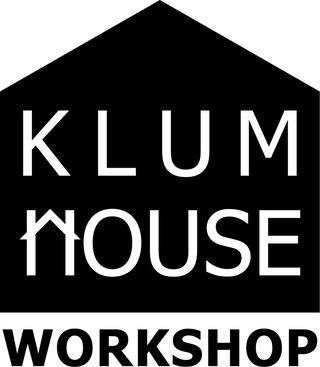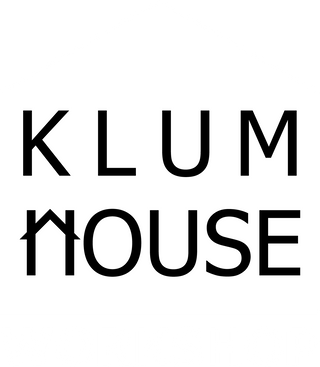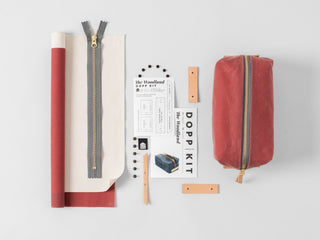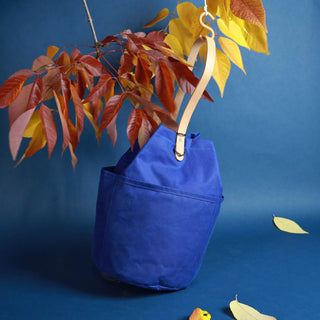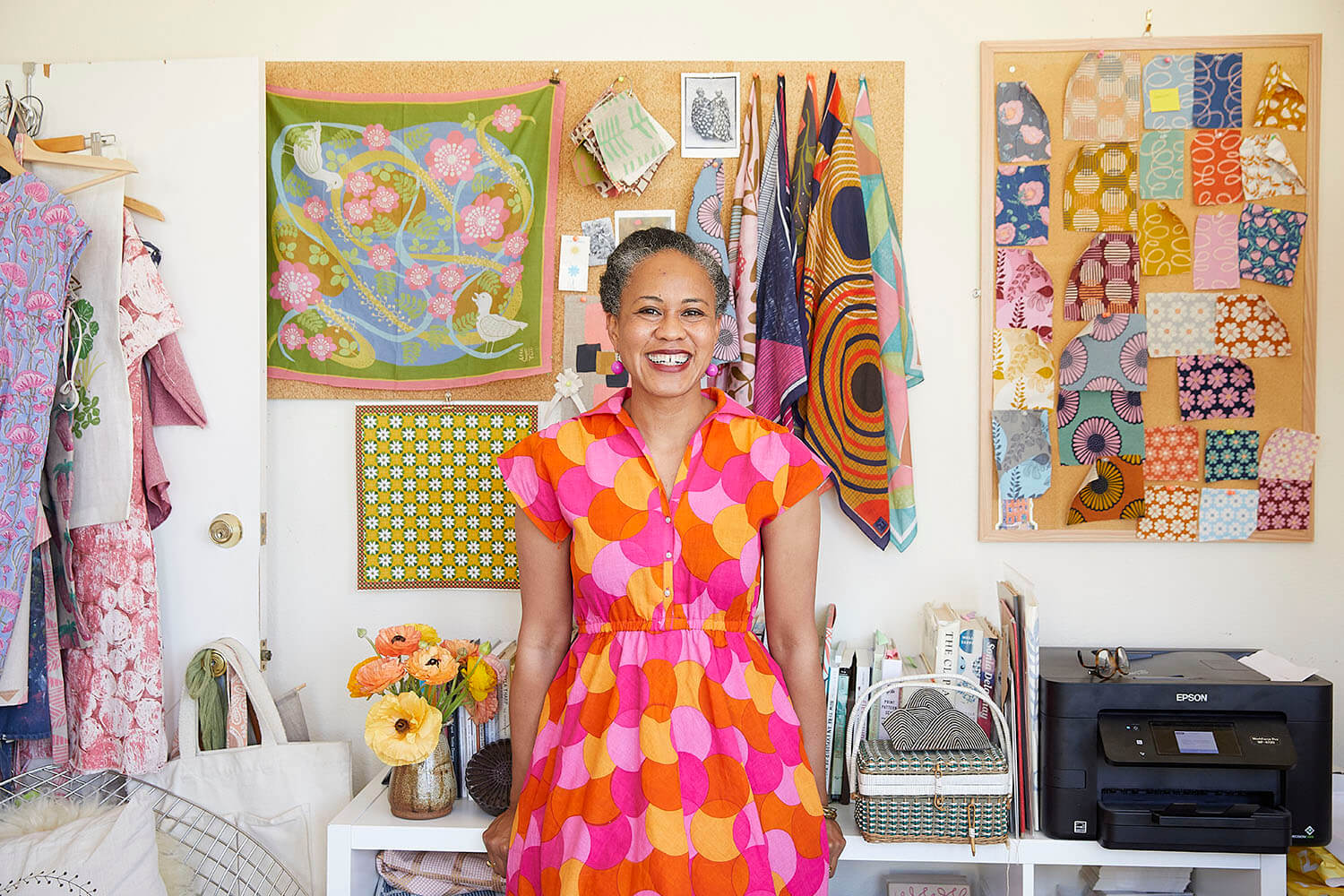
Printmaker, textile designer, and author Jen Hewett is one of our very favorite makers. From her gorgeous printed textiles to her enamel pins, fine art prints, and wearable-art scarves, all of us here at Klum House are human heart-eyes-emojis for all of Jen's work. We get especially excited any time we see someone make one of our bag patterns using Jen's fabric (x100 if that person happens to be the artist herself).

This week, Jen's new book, This Long Thread: Women of Color on Craft, Community, and Connection, is officially out in the world, and we are honored to have received an advanced copy—because it just so happens to feature an interview with our very own Ellie Lum! Unlike her first book, Print, Pattern, Sew, a collection of how-to block printing and sewing projects, This Long Thread is a collection of stories.

As the publisher puts it: "This Long Thread explores the work and contributions of people of color across the fiber arts and crafts community, representing a wide spectrum of race, age, region, cultural identity, education, and economic class. These conversations explore techniques and materials, belonging, identity, pride of place, cultural misappropriation, privilege, the value (or undervaluing) of craft, community support structures, recognition or exclusion, intergenerational dialogue, and much more."
Having now had the pleasure of holding This Long Thread in our hands and getting to read the stories of the talented and inspiring women within, we can confidently say that this book is a treasure. Jen has brought together a stellar lineup of knitters, quilters, sewers, and weavers whose work is rooted in their unique backgrounds and lived experiences. This book is a beautiful and much-needed celebration of diversity in the world of craft. Gets your hands on it wherever books are sold (but preferably from your local, independent bookshop!)
BUY THE BOOK!
A CONVERSATION WITH THE AUTHOR
KH: In this book, you've brought together such an amazing group of women, with personal backgrounds as diverse as their creative work. I'm curious about what your process was like as you set out to collect and tell these stories. Did you start with a dream list of folks you knew you wanted to include? Did you discover brand new makers you hadn't heard of before?
JH: The book has three different types of content: interviews I did, essays I commissioned from others, and responses to a survey that I’d created and circulated in 2019. I had a list of people that I wanted to include, but I also knew that the survey would help me find more folks. It was important to me that I include makers who didn’t have a national (or international) reputation, or large social media followings, and the survey allowed me to hear from a much broader range of makers.
And yes, I did definitely discover new makers in the process!
KH: Your own creative and professional work has several different facets: you are a printmaker, you design fabric, you have an online shop, you have a subscription-based scarf club, you teach workshops—and now you've published two books! What do you like about books as a creative form? How do you see your books fitting into the larger architecture of your work?
JH: I make things because it’s my nature to do so. I have a lot of things I want to say, and making is my form of expression. Sometimes the thing I make is a scarf, other times it’s a quilt, sometimes it’s a bag, sometimes it’s a book.
As an artist, I often get asked “tell me about your work.” The answer to that questions uses words to convey something that is visual, tactile, and often abstract. It’s different with a book. A book answers that question for me. Plus, I just like a good written story!
KH: You began writing this book back in 2019, which in many ways, looking back now, feels like a different world. This Long Thread feels like both a celebration and a reckoning within the craft community, highlighting diverse voices that have historically been excluded. I'm wondering if you feel there has been a meaningful cultural shift in the craft world over the past 18 months? What are you seeing that makes you feel hopeful? Where is there still room to improve?
JH: This is something I talk about a bit in the book: the craft world isn’t separate from the larger world. Making is inherently political, regardless of whether or not a maker intends for their work to be political. We all make choices around materials, subject, and form, and these choices have real world implications. I have noticed more conversations around this. I’ve also noticed companies and organizations taking steps towards becoming more inclusive. Both of those things make me feel hopeful.
However, 18 months is a small amount of time in the grand scheme of things. It’s certainly not enough time to completely overhaul broken systems. I hope people aren’t expecting quick fixes. I hope they have the stamina to keep moving forward.
_________________________________________________________________________________________________________________
AN EXCEPT FROM ELLIE'S INTERVIEW IN THIS LONG THREAD

"As a teen and young adult developing my sense of identity as a maker, I found myself drawn into subculture, first in San Francisco and then in Philly, where I worked as a bike messenger beginning at age 17. Bike messengers, skateboarders, graffiti artists, and activists became my people. Subculture swooped in to fill the gap where my own family history and cultural identities felt lacking. As it often does for kids trying to escape chaotic home environments, DIY punk culture became like a second family to me. It gave me a strong sense of identity within a community, and it made it possible for me to be independent at a young age.
"My first sewing studios were in punk houses in abandoned warehouses. Sometimes I’d roll a mat out on top of my cutting table, and it would double as my bed! During that time, my community was made up of folks for whom life was really hard. There was a lot of addiction, homelessness, and incarceration. Everyone was just trying to hang on and survive another day. Sewing was my lifeline. Unlike the majority of my peers, I had an anchor. Especially once I founded my first business and became responsible for other people’s livelihoods, falling off the deep end simply wasn’t an option. I had to show up and work my ass off every day. I’m not sure where all of that focus and ambition came from, or why I had it and others didn’t, but I do know that sewing was my saving grace, and through my business it allowed me to keep others afloat as well."
GRAB A COPY

